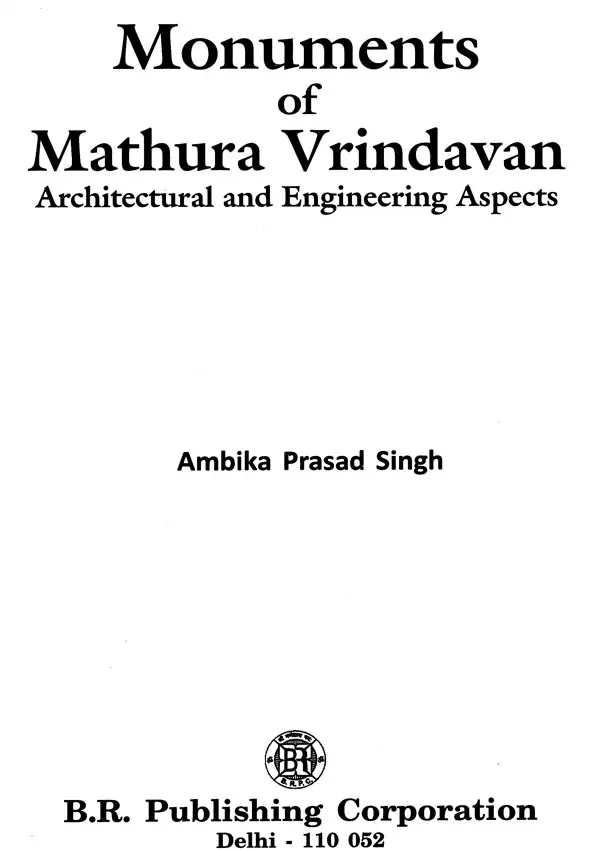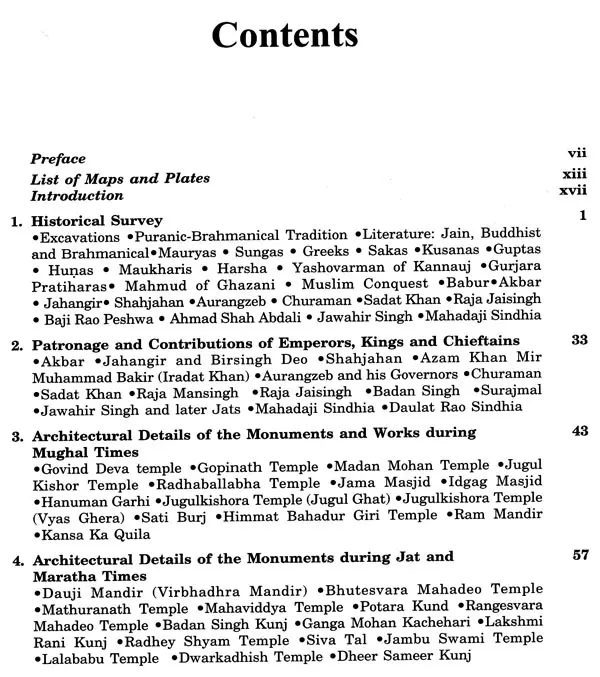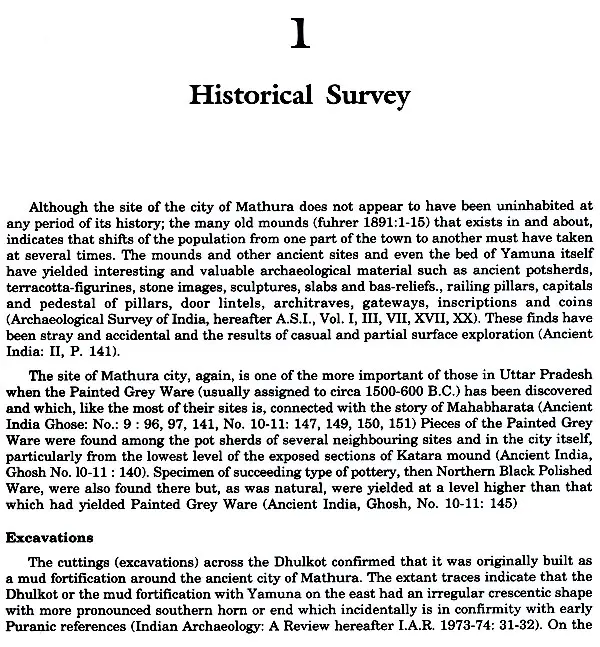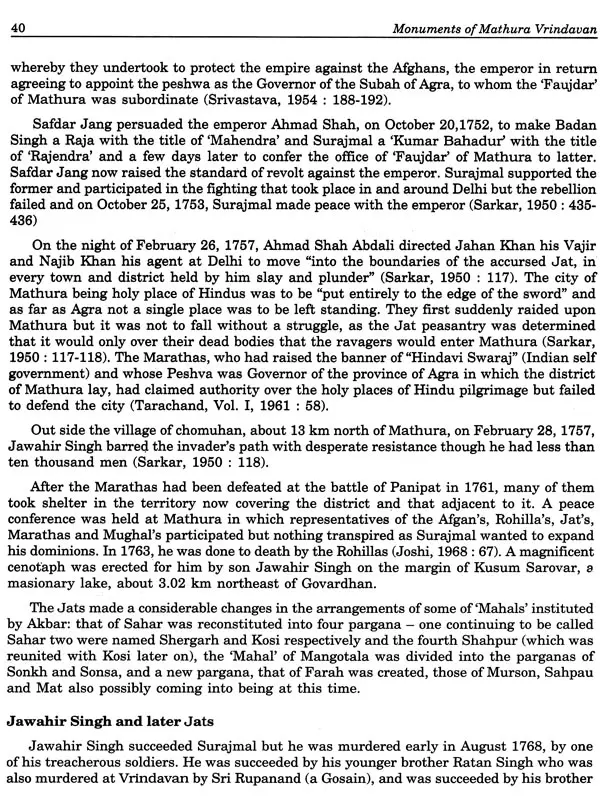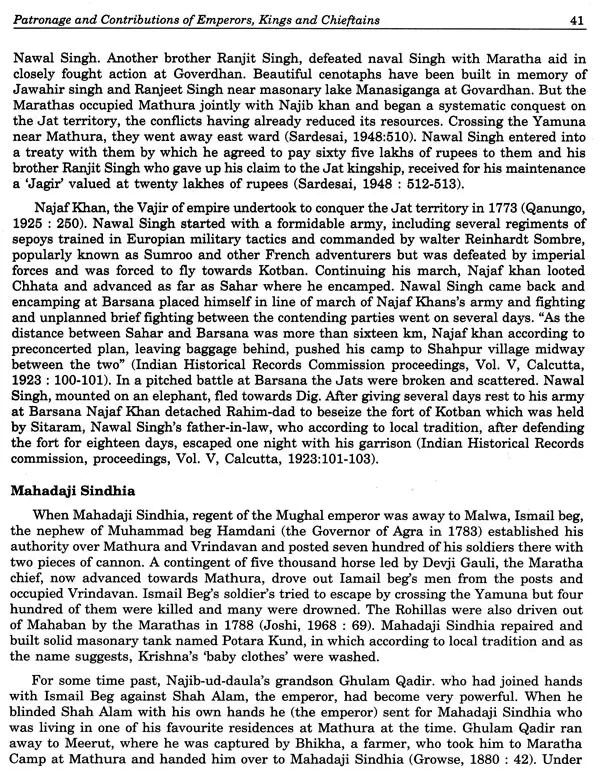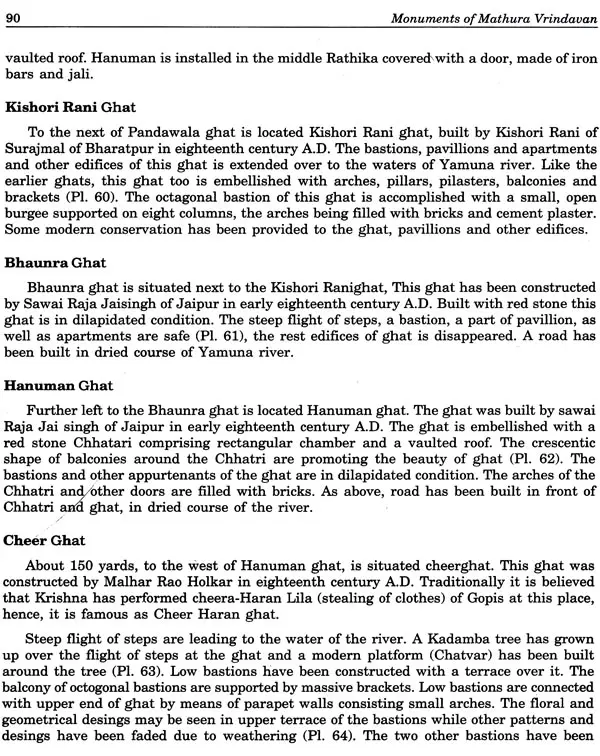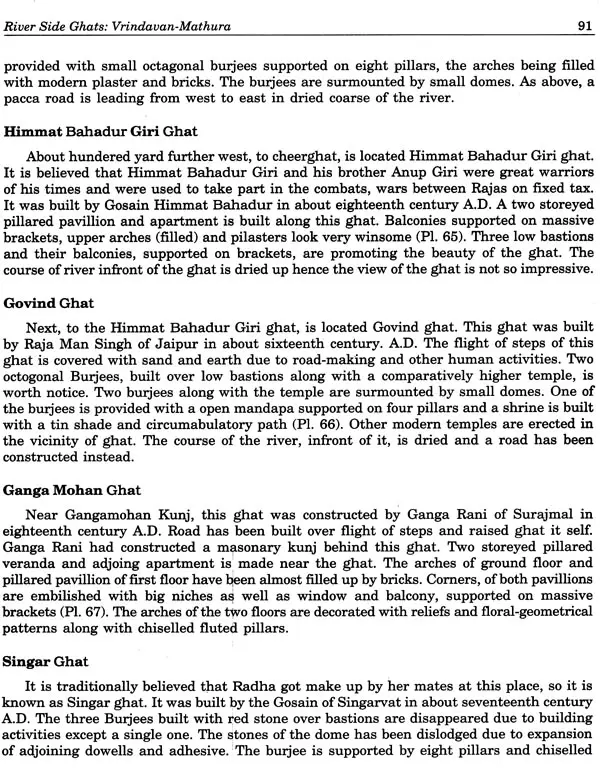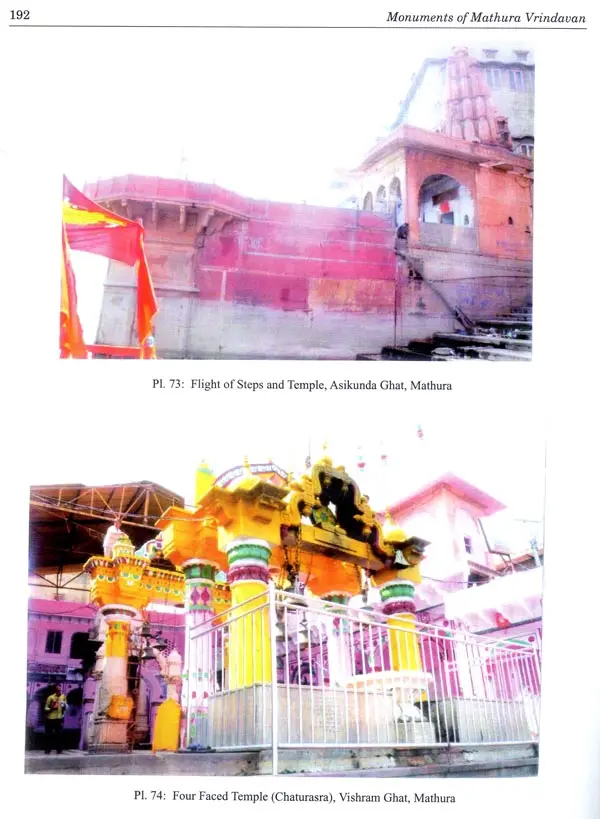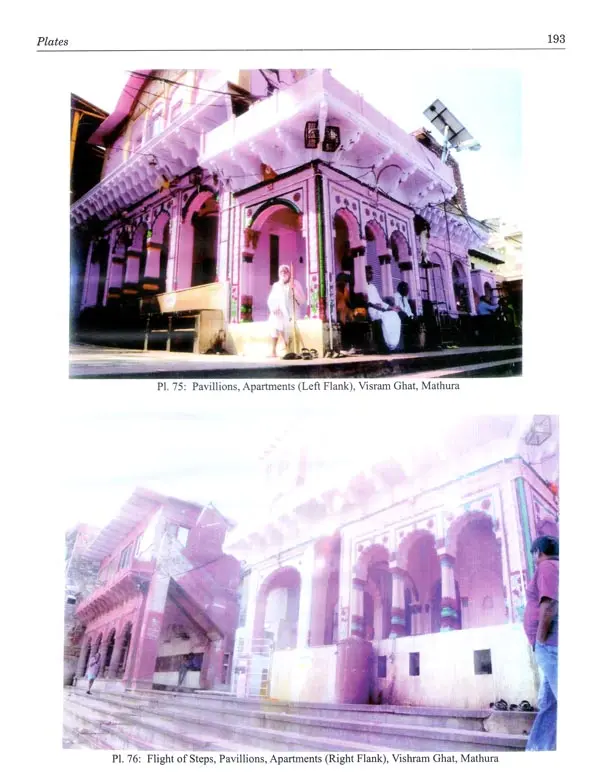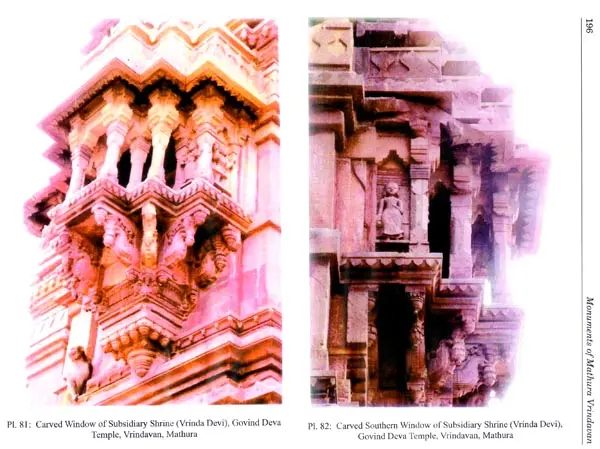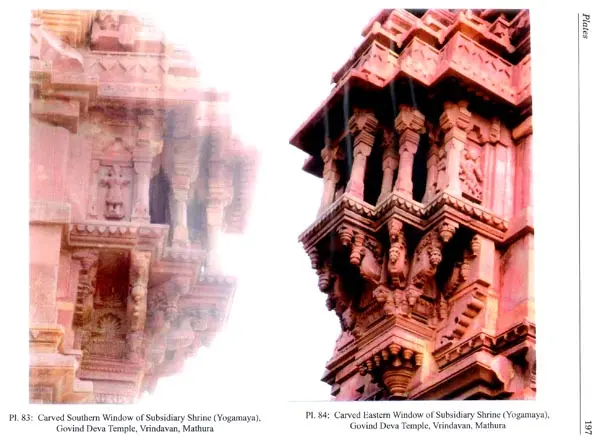About the Book The present work is the comprehensive study of architectural and engineering aspects of the monuments of Mathura-Vrindavan comprising history and culture including the development of gardening at monuments. The twin towns: of Mathura and Vrindavan are a well known pilgrimage and cultural centre of India as well as it may be regarded as cultural cradle of India also. The architectural and engineering aspects are analysed in the light of historical and archacological evidence right a from early date especially from Mughals to the times of Marathas. The first chapter discusses with Puranic Brahmanical traditions including whole historical-survey with literature and political history of Mathura from Mauryas to Marathas. Second chapter deals with contributions made by patronage and emperors, kings and chieftains in building various monuments. A vivid description of architectural details of the monuments of Mughals, Jats and Maratha times have been referred to in the third and fourth chapters respectively. The fifth chapter deals with engineering aspects mentioning the literary artisans and their qualities, building evidence materials, utilization of wood, brick construction as well as mortar and plaster for smooth surface including the development of gardening at monuments. Sixth chapter discusses with river side ghats at Vrindavan and Mathura with their structural features and builders. The seventh chapter reflects to the aesthetic and decorative devices of monuments. With subsantiality of the subject, lastly, the conclusion (epilogue) has a glimpse of the whole work. Thus, an attempt has been made, from various sources to appraise the architectural, structural and engineering aspects of monuments for the objective to apprehend their evolution and systemic development process. p>
About the Author The present work is the comprehensive study of architectural and engineering aspects of the monuments of Mathura-Vrindavan comprising history and culture including the development of gardening at monuments. The twin towns: of Mathura and Vrindavan are a well known pilgrimage and cultural centre of India as well as it may be regarded as cultural cradle of India also. The architectural and engineering aspects are analysed in the light of historical and archacological evidence right a from early date especially from Mughals to the times of Marathas. The first chapter discusses with Puranic Brahmanical traditions including whole historical-survey with literature and political history of Mathura from Mauryas to Marathas. Second chapter deals with contributions made by patronage and emperors, kings and chieftains in building various monuments. A vivid description of architectural details of the monuments of Mughals, Jats and Maratha times have been referred to in the third and fourth chapters respectively. The fifth chapter deals with engineering aspects mentioning the literary artisans and their qualities, building evidence materials, utilization of wood, brick construction as well as mortar and plaster for smooth surface including the development of gardening at monuments. Sixth chapter discusses with river side ghats at Vrindavan and Mathura with their structural features and builders. The seventh chapter reflects to the aesthetic and decorative devices of monuments. With subsantiality of the subject, lastly, the conclusion (epilogue) has a glimpse of the whole work. Thus, an attempt has been made, from various sources to appraise the architectural, structural and engineering aspects of monuments for the objective to apprehend their evolution and systemic development process.p>
Preface Mathura, designated as 'mahapuri' was classed among the 'seven holy cities' of India and was amongst the most inhabited sites of the country. It finds mention under a number of different names in ancient literature. The site of Mathura city is also one of the most important sites located in Uttar Pradesh which comprises of the painted grey-ware (usually assigned to circa 1500-600 B.C.), and which is like the most of their sites connected with the story of Mahabharata (Ancient India, Ghosh, No. 9:16 97, 141, No. 10-11: 147, 150. 151).
Hiuen-Tsang, during his life-time visited India, between 629 and 645 A.D. and also travelled in the kingdom of Mathura as well as saw that monuments had been erected at many places at Mathura. The place called, Katra Keshava Deva, marks the centre of ancient city and it was perhaps the site of monastery called 'Yash Vihar which was still in existence in the middle of sixth century. The archaeological researches here unearthed. numerous old relics.
Book's Contents and Sample Pages
